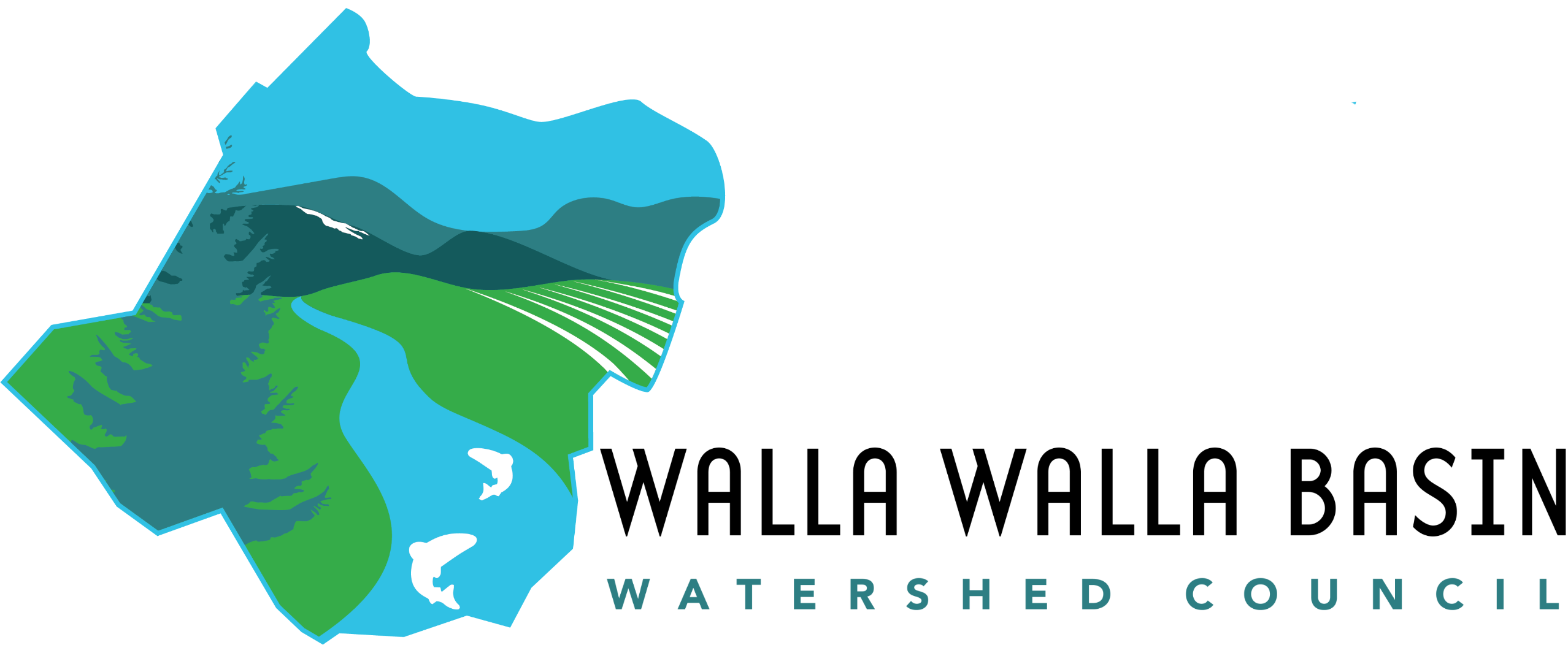The Walla Walla Valley River Basin is approximately 1,760 square miles, with an underlying shallow alluvial aquifer of 200 square miles. Many farmers, businesses, and residents use water from the shallow aquifer making it a highly important source of water for Walla Walla Valley. In addition to supplying wells with groundwater, the shallow aquifer also feeds the springs, streams, and rivers of the Walla Walla Basin. The high connectivity between the shallow aquifer and surface water bodies is important in enhancing base flow and, during the summer, cooling water temperatures for threatened salmonid species in the Walla Walla River Basin.
For many years the volume of water being pumped out of the aquifer has exceeded the amount of water recharging it, and the shallow aquifer has fallen into a state of decline. Since 2001, the Walla Walla Basin Watershed Council (WWBWC) has been constructing a community-based network of shallow monitoring wells (250 feet or less) in the Walla Walla Basin as part of its long-term efforts to understand the shallow (unconfined) alluvial aquifer. The WWBWC currently monitors over 60 wells in the Walla Walla River Basin plus over 100 wells with historic data. Groundwater monitoring data has allowed the WWBWC to design projects to mitigate aquifer decline and inform groundwater management decisions in the basin.
The shallow well monitoring network is a grassroots, community effort lead by the WWBWC. The well network includes both urban and rural wells in and around Milton-Freewater and Umapine. They are owned by a variety of water users, including states, counties, cities, businesses, and universities within the basin. However, most monitoring wells are irrigation or old domestic wells owned by private land owners. All the participating well owners do so voluntarily, aiding in the effort to understand and mitigate the decline of the aquifer: a critically important resource to the entire Walla Walla Valley community.
The Walla Walla Basin Watershed Council currently monitors about 60 wells in the Walla Walla Valley. Data are updated on a quarterly basis. Below is a map showing the location of each well. To view and download available data, click on a colored pin. Please download the Metadata file for information about data quality and data table information. The Google Earth (.kmz) file is also available for download by clicking on the link below the map. For information regarding how the groundwater data were collected please see the WWBWC's Standard Operating Procedures.
If you have questions about this page or our groundwater monitoring network, please contact:
Funding Source: Oregon Watershed Enhancement Board (OWEB)
Download the Google Earth Groundwater (.kmz file)
Download the WWBWC's Standard Operating Procedures
Link to Oregon Water Resource Department (OWRD) Groundwater Level Data
Link to Washington Department of Ecology (WDOE) Groundwater Level Data
WWBWC Near Real-Time Groundwater Monitoring Stations
| Site ID | Monitoring Page |
| GW046 | Johnson Recharge Observation Well |
| GW169 | Chuckhole Recharge Observation Well |
| GW170 | Mud Creek Recharge Observation Well |
| GW171 | Fruitvale Recharge Observation Well |
